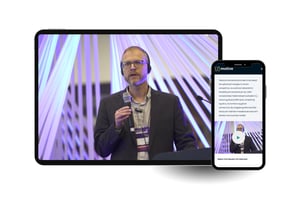Unlocking the
Power of RSP,
eSIM, and iSIM
.png)
The Remote SIM Provisioning Opportunity:
Unlocking a New Era of Connectivity
The mobile industry is undergoing a transformation with the adoption of Remote SIM Provisioning (RSP), eSIM, and iSIM technologies. These advancements promise to revolutionize connectivity by enabling seamless device provisioning, improving security, and unlocking new opportunities for enterprises, IoT, and private networks.
By 2030, 6.9 billion xSIM smartphone connections and over 25 billion IoT devices are expected to be connected globally.
📥 Download the GSMA Report: Industry insights on how eSIM and iSIM are shaping the future.
What is Remote SIM Provisioning?
Remote SIM Provisioning (RSP) allows mobile devices to download and manage SIM profiles remotely, eliminating the need for physical SIM cards. This innovation enables greater flexibility for consumers, enterprises, and IoT applications. Learn more about RSP here.
Key Technologies: eSIM & iSIM
eSIM (Embedded SIM): A digital SIM embedded into a device, allowing users to switch carriers without swapping physical SIMs.
iSIM (Integrated SIM): A step beyond eSIM, iSIM is directly integrated into a device’s processor, reducing space requirements and increasing security.

Why eSIM and iSIM Matter
eSIM and iSIM technologies offer a new paradigm in connectivity, ensuring devices can seamlessly connect and switch between networks without manual intervention. These innovations are particularly beneficial for IoT applications, enterprises, and consumers looking for greater flexibility and security in mobile connectivity.
- Seamless Global Connectivity: Manage devices remotely without the need for SIM swaps.
- Scalability for IoT: Connect billions of devices across industries, from smart cities to autonomous vehicles.
- Security & Compliance: Enhanced encryption and remote authentication protect user data.
- Operational Efficiency: Automate SIM provisioning and reduce logistical complexity.
Traditional SIM vs. eSIM vs. iSIM
| Technology | Form Factor | Key Benefit |
|---|---|---|
| Physical SIM | Removable | Requires manual insertion and replacement |
| eSIM | Embedded | Supports remote provisioning and profile switching |
| iSIM | Integrated into SoC | Ultra-efficient, eliminates separate SIM component |
The RSP Opportunity: Progress and Challenges
RSP is enabling a more flexible and scalable approach to SIM management, allowing devices to be provisioned and managed over the air. While the technology is evolving rapidly, adoption remains a challenge due to regulatory, operational, and technical hurdles.
According to Pablo Jacopino, Head of Research at GSMA Intelligence, eSIM technology is gaining traction, with adoption rates projected to reach 76% by 2030. However, growth is uneven across regions, with the US leading the way due to the rise of eSIM-only smartphones like Apple’s iPhones.
In the IoT sector, automotive applications have already embraced eSIMs, but adoption in utilities, manufacturing, and logistics is still in its early stages.
Challenges Slowing Adoption
Despite the technological advancements, several barriers are slowing eSIM and iSIM adoption:
- Ecosystem reconfiguration: Transitioning from traditional SIMs to eSIM/iSIM requires significant changes in infrastructure.
- Operational complexities: Businesses need simplified, digital end-to-end processes for effective eSIM deployment.
- Security concerns: RSP relies on Over-the-Air (OTA) provisioning, making robust security measures essential.
- Regulatory compliance: Different countries impose varying rules on eSIM usage, creating hurdles for global deployment.
Use Cases & Market Opportunities
- xSIM for Consumers: A Reality Seeking Scale
- xSIM for Industries: A Key Driver of IoT Deployments
- xSIM for Enterprises: Scaling Challenges and Solutions
- 271 consumer eSIM devices launched globally.
- 441 operators have launched eSIM services for smartphones.
- 123 countries currently support eSIM services.
- eSIM adoption has been slower than expected, except in the US, driven by Apple's eSIM-only iPhones.
- Growth outlook remains strong, with 76% eSIM penetration projected by 2030.
- International travel is emerging as a successful eSIM use case.
📥 Learn more about how consumers are adopting eSIM technology.
Current Status
- eSIM is already mainstream in connected vehicles.
- IoT adoption remains limited to single initiatives rather than sector-wide deployments.
Emerging Trends
- Enhanced SGP.32 specifications for IoT eSIM adoption.
- Growing availability of eSIM-enabled IoT devices and solutions.
- Increasing rollout of private networks utilizing eSIM.
- 39% cite cost of implementation as a major hurdle.
- 35% face security concerns in eSIM adoption.
- 33% struggle with integrating eSIM into existing systems.
- 31% report a lack of internal expertise in managing eSIM solutions.
Learn more about how enterprises can scale xSIM deployments.
Key Insights on RSP and eSIM Adoption
SGP 32 and Its Impact: The latest GSMA specifications simplify RSP for IoT, improving efficiency and reducing implementation barriers.
IoT Growth & eSIM Adoption: By 2030, 40% of all IoT devices are projected to use mobile eSIMs, highlighting the massive growth opportunity.
Geopolitical & Regulatory Barriers: Countries like India, Brazil, and Turkey require local compliance, pushing enterprises to adopt eSIM solutions for future-proof global deployment.
The Role of AI & Automation: Enterprises are moving towards AI-driven automated SIM provisioning, eliminating manual processes and improving efficiency.
Enterprise Control & Ownership: The new EIM (Enterprise Identity Management) model shifts SIM control from carriers to enterprises, allowing seamless device connectivity management.
Looking Ahead: The Path to Mass Adoption
While eSIM and iSIM adoption is accelerating, a fully digital end-to-end operational process is essential for scalability. The industry needs to overcome technical, operational, and regulatory challenges to unlock the full potential of Remote SIM Provisioning.
At Motive, we’re pioneering the next generation of remote SIM provisioning (RSP) solutions, enabling:
✔️ Faster Device Onboarding: Real-time eSIM/iSIM provisioning.
✔️ Enhanced Security & Compliance: Industry-leading authentication and encryption.
✔️ Scalable IoT Deployments: Seamless profile management for enterprises.
.png?width=300&name=mwc-sim-session%20(2).png)
